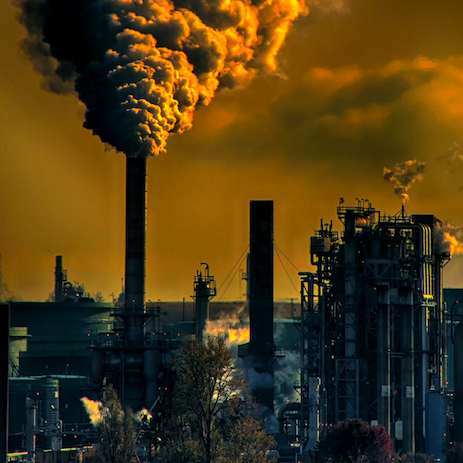Corporations Can and Must Become Agents of Equity, Says Coalition


Three nonprofit organizations — FSG, PolicyLink and Just Capital — are cooperating on a project called the Corporate Racial Equity Alliance, which would create “rigorous corporate performance standards” for measuring goals and commitments associated with a company’s policy statement for racial and economic equity.
FSG consults with corporations, foundations and nonprofits to strengthen their corporate profiles. FSG and PolicyLink — the latter a national research and action institute advancing racial and economic equity — have worked together since 2015 on publications on the subject of racial equity. And, in 2020, the two organizations began the Alliance project with the addition of Just Capital, an independent nonprofit contributing the data and insight necessary for corporations to deliver on their goals.
To quote from the coalition’s vision and mission statement: “An equitable nation includes corporations taking action to improve the lives of the 100 million economically insecure people in America living in or near poverty, within one generation.”
A methodical process to develop corporate standards began in July of 2020 when PolicyLink, FSG and Just Capital came together to publish the CEO Blueprint for Racial Equity, a guide for businesses to address key components, including the intended and unintended impacts of products, services, operations, policies, and practices on people of color and low-income communities. The group offers key recommendations across the three domains of corporate influence: the company, the community and society.
From October 2020 through January of 2021, the concept was tested with several audiences, including 40 business executives, investors, advocacy groups and youth leaders, as well as participating corporate partners. From there, the corporate standards development process — and the Alliance’s report was published last month.
There are two prevalent assumptions of the alliance: first, that corporations have a moral obligation to make a positive impact. And, having committed to a positive impact, corporations then should be willing to prove the commitment in numbers.
According to Just Capital’s recent polling, 95 percent of Black Americans and 79 percent of Americans overall believe it is important for companies to promote racial diversity and equity in the workplace. And 81 percent of Black Americans and 64 percent of Americans overall say companies have more work to do to achieve racial equity in America.
Further, the Alliance is built on the premise that performance standards are needed for purposes of “accountability, to establish consistency in terms of defining racial equity, and to standardize how businesses should approach, measure, disclose, and speak publicly about their equity journeys.”
The project operates under the leadership of Mahlet Getachew, the managing director of corporate racial equity at PolicyLink. As a former corporate lawyer, Getachew brings an understanding of business risk and strategy development to the program. And, as a first-generation Ethiopian immigrant, her commitment to racial equity has been informed through personal experience as often the solitary Black person in a predominantly white environment.
“My work and experience along the way helped me understand how power is used in the private sector to shape our economy and democracy," Getachew said. "Whether we want to accept it or not, businesses are shaping our country’s identity and what our collective and individual futures will look like."
“Investors, the most powerful stakeholders that corporations listen to, are increasingly demanding results against commitments … and making investments based on a corporation’s goals met," she added.
However, the idea of management by objectives has the ability to make a C-suite manager a bit queasy, especially where objectives are tied to salary and promotions.
But what the Alliance suggests is that corporations participate based on their own focus and abilities. IBM’s blueprint wouldn’t necessarily resemble Burger King’s, for example.
“Standards would be established based on a company’s size and income, and tailored to resources available,” Getachew said. Objectives would be decided internally, and then timeframes and commitments set based on what makes sense for that company. Investors and other stakeholders might participate in the goal-setting process. The CEO Blueprint helps corporations arrive at those priorities and establish standards.
“We are actually just at the starting point of this process,” Gatechew explained. “Accountability standards such as certifications, benchmarks or publicly disclosed information have yet to be decided.”
Through June, 3, the Alliance is accepting public comments on its proposed standards for equity in the workplace through its website.
Image credit: Cassandra Hamer via Unsplash
21st-Century Capitalism Meets the Pope


You normally don’t immediately associate capitalism with Pope Francis. As capitalism brushes up against politics, and the Pope being an apolitical spiritualist, for him to endorse a collective of major corporations gains your attention. And that is exactly the case as the Pope is making his support for the Council for Inclusive Capitalism (In-Cap) obvious through audiences, photo-ops and with his words.
In fact, In-Cap was created in response to a challenge from Pope Francis. When speaking to business leaders at the 2016 Fortune-Time Global Forum he stated, “What is required now is not a new social compact in the abstract, but concrete ideas and decisive action which will benefit all people and which will begin to respond to the pressing issues of our day.”
Added the pontiff, “An inclusive capitalism that leaves no one behind, that discards none of our brothers and sisters, is a noble aspiration, worthy of our best effort.”
Inspired by his words, In-Cap founder and co-chair Lynn Forester de Rothschild formed the Council for Inclusive Capitalism to discuss solutions to inequality and climate challenges.
The Council is led by a core group of global leaders, known as “Guardians for Inclusive Capitalism,” who meet annually with Pope Francis. These leaders represent more than $10.5 trillion in assets under management, companies with over $2.1 trillion of market capitalization, and 200 million workers in over 163 countries.
There are 249 businesses participating in the Council representing the pinnacles of the free enterprise system: Dupont, Motorola, Bank of America, Salesforce, Merck, TIAA, Visa and Mastercard, to name a few. Each CEO commits to and publishes measurable goals to advance people, planet, principles of governance and prosperity.
The shared view of capitalism from these world leaders is that it creates multiple opportunities for individuals in society, including producing wealth and innovation, improving the lives of individuals, and giving power to the people. Capitalism at its best!
The Council has as its purpose to remove barriers and create opportunities for wealth for more people, particularly those who have been historically marginalized, starting with women and people of color.
However, the downside to capitalism has always been greed. In 2020, the ratio of CEO to average worker compensation was 351 to 1, up from 61 to 1 in 1989. In a power struggle, continuation of this trend would ultimately bring imbalance to a democracy.
"To address growing inequality and climate change in the 21st century, capitalism must adapt," de Rothschild said. "We need new ideas and bold leadership.”
The challenge for the Council, and the Pope, is to make public the accounting for these “new ideas and bold leadership” so as to ensure the authenticity of what might be considered merely the photo-op of all photo-ops.
To that extent, the Estée Lauder Co. (ELC) represents one company committed to the principles of the Council through its CEO and chairman of the family business, William Lauder. Lauder is one of the “Guardians” of In-Cap, supporting the Council not only through participation, but also acting as consultant to the process and one who is part of the committee meeting with Pope Francis.
A sampling of the 17 commitments ELC has made through the Council includes pledges to spend $10 million through 2023 to support racial and social justice, to reach U.S. population parity for its Black employees for all company levels by 2025, and ensure 75 to 100 percent of ELC’s packaging will be recyclable, refillable, reusable, recycled or recoverable that same year.
There is a dotted-line relationship between ELC, its commitments to In-Cap and the production end of its business as a cosmetics company. However, the same thread of employee consideration and philanthropy exists throughout.
In fiscal 2021, the manufacturing arm of ELC reported that 82 percent of its global workforce is female, and 46 percent of its U.S. workforce is Black, Indigenous and People of Color (BIPOC). Fifty-five percent of global VP positions and above at the company are held by women and 44 percent of the board of directors are women.
Taking to heart de Rothschild’s words — "our moral compass should tell us that we should take better care of the people who take care of us” — it was recently announced that the ELC Cares Employee Relief Fund has distributed more than $10 million to employees globally. The fund was originally created in response to the pandemic; however, it has since been expanded to support employees who are experiencing personal disasters and hardships beyond COVID-19.
ELC’s and In-Cap’s motives, commitment and results appear to be authentic. Measurable results — including numbers, percentages and ratios, dollars and nose count — will continue to be the proof.
Image credit: Aliona & Pasha via Pexels
From Finland, Rens Pushes Sustainable Apparel Forward with Coffee Hoodie


The Finnish footwear company Rens, founded by self-proclaimed “sneakerheads” Jesse Tran and Son Chu, is known for what it calls the world’s first sneaker made from coffee grounds. Rens has now expanded into sustainable athleisure by “revolutionizing a modern essential” with the recent launch of its Elemental hoodie line. The hoodie is made with a combination of yarn upcycled from coffee grounds, recycled plastic fibers and bamboo-based viscose; so, as Rens puts it, it’s more likely to be “warm on you, not the planet.”
This is also Rens’ first move into “Sustainable Fashion Meets Metaverse,” one of the hoodie’s taglines. The company has offered the first 2,022 buyers a free climate-neutral digital version of the hoodie, i.e., an NFT (non-fungible token), to mint and wear in the metaverse, as in such virtual spaces as Sandbox and Ready Player Me.
TriplePundit connected with Tran and Chu to get their take on the intersection of sustainable e-commerce with the growing digital fashion industry, and the climate impacts of both.
Why a coffee-based hoodie?
Tran and Chu say the recent move into apparel was a natural outgrowth of their audience’s desire for sustainable athleisure following the successful 2021 crowdfunding of Rens’ Nomad athletic sneakers.
The hoodie makes use of the same signature recycled coffee yarn as the sneaker lines — made by processing post-consumer coffee grounds with recycled plastic bottles — alongside bamboo-derived viscose.
Every hoodie diverts 43 cups of recycled coffee grounds and about 12 recycled plastic bottles from landfill and saves 2,300 liters of water compared to conventionally-produced cotton sweatshirts, according to Rens.
Beyond coffee: Rens wants a conversation on responsible digital fashion
The Elemental hoodie is the first Rens product to be accompanied by an NFT, something founder Jesse Tran calls a “metaphysical revolution in sustainable fashion.” He uses “metaphysical” to mean any current and future Rens apparel “with both physical and metaverse elements involved.”
And this is just the beginning. “We aim to provide our community with sustainable fashion products that can be worn in real life and the metaverse. In other words, we want those who proudly wear our physical hoodie to travel from one country to another be able to transition between realities wearing the same item, and that’s only possible by allowing them to use our sustainable products in the Web3 and the metaverse,” Tran and Chu explained to 3p.
Digital outfits aren’t new: They have existed for as long as people could dress virtual avatars in video and computer games (think Sims or Fortnite). Now, the concept of digital fashion is making a virtual wardrobe possible, too.
That said, digital clothing still has its own impact on the environment, as connecting to the Internet has its own carbon footprint. The blockchain technology generally used to register NFTs is also carbon-intensive.
To that end, Rens has chosen to use the low-emission Polygon blockchain and says residual emissions from minting the NFT hoodie is comparable to watching 20 minutes of YouTube.
Offsetting the impacts of sustainable fashion
Rens is currently working to ensure that the manufacture of all of its apparel, including the hoodie line and NFTs, is climate-neutral by working with Climate Partner and Aerial on recognized climate projects.
The company’s original sneaker line is officially climate neutral-certified, and Rens has offset more than 410 tons of CO2 by supporting wind power projects in northeast Brazil since 2018.
Meanwhile, from that same year until 2021, the company was able to recycle more than 750,000 cups of coffee and 250,000 single plastic bottles, Tran and Chu told 3p. They expect this number to grow with the company’s expanded product line.
On top of that, Rens says it only uses certified Global Recycled Standard (GRS), Forest Stewardship Council (FSC) and Recycled Claim Standard (RCS) materials — all of which are international, voluntary, full product standards that set requirements for third-party certification of various social and environmental practices — to keep the company’s carbon footprint low.
Once the production of the Nomad and Elemental product lines finishes, the staff at Rens will calculate total emissions from sourcing to shipping to end-of-life and choose climate products to offset all residual emissions.
Image credit: Rens consumer site
Google’s 2030 Roadmap Directs Traffic to Freedom from Carbon Emissions


Google recently released a “policy roadmap” for getting to a 24/7 carbon-free energy (CFE) future for its operations by 2030. Unlike some other corporate roadmaps, Google went beyond talking solely about its own progress and plans for reducing carbon emissions. The document also addresses the circular relationships of advancing clean energy technology, market expansion and supporting sustainable consumer behavior.
Add in a dose of public policy assessment, and the roadmap reflects expertise frequently found in nonprofit, academic and governmental documents. That’s hardly serendipity since Google had a “grid supernerd” from Princeton at a media roundtable for the report’s release.
The Google roadmap starts in a natural place for its business — technology and clean energy — but it’s a launching point for any discussion, given that the global energy sector is responsible for 75 percent of the world’s carbon emissions. The International Energy Agency (IEA), which advocates improved energy policies for its thirty member and eight associated countries, has a roadmap of its own to get to net-zero carbon emissions by 2050.
The World Resources Institute (WRI) does a good top-level review of the IEA report. Even as WRI commends some of IEA’s analyses and the focus on renewable energy replacement of fossil fuels, their review also calls out potential weaknesses. For example, WRI deems IEA’s report to have an overly dependent position on biomass fuels. Yes, biomass fuels are renewable, but they also have some serious tradeoffs, including their own large amount of carbon emissions and other hazards that negatively impact humans.
Pretty much any report from any company, NGO or government source is going to say that the world needs to free itself of fossil fuel use, coal being a common target for elimination — with good reason. For 2020, according to the Environmental Protection Agency (EPA), the electricity sector comes in a close second to transportation in the U.S. for carbon emissions. Coal makes up 54 percent of that amount, but only produces 20 percent of the nation's electricity.
In sustainability terms, that’s a pretty lousy return on investment.
While Sen. Joe Manchin (D-W.Va.) didn’t heed that call for the proposed Build Back Better legislation, the United Mine Workers of America (UMWA) urged him to support it. The union has seen the handwriting on the wall and wants the clean energy industries to locate in coal-based communities so coal workers can move into those new jobs.
The WRI review, the Google roadmap and other reports acknowledge this need for equitable transitions, supported by public policy and investor funding. For example, WRI emphasized that wealthier countries need to move faster on coal elimination while helping those less developed reduce their dependency without devastating already fragile economies and environments.
In similar fashion, Google discusses some equity issues of transition in its report, noting its data center in Iowa is reliant on clean energy sources while a coal plant operates “down the road.” Google expresses the need to offer new job opportunities in communities where livelihoods are tied to legacy energy production. The company also cites repurposing a former coal-fired power plant in Alabama’s Jackson County. It’s an example of how policymakers can support beneficial conversion of carbon-producing sites already located near electrical infrastructure.
Even as it touts its successes, Google notes and analyzes its challenges. While its data center in Finland achieved 94 percent carbon-free energy in 2020, its Singapore site reached only 4 percent. What this global company faces with differences in geography, culture, governments and energy resource availability offers insight for others.
And that, frankly, is what a report like this should do. If a corporation is going to kill a digital tree (or, heaven forbid, a real one) to produce a document, let it be one that not only provides good PR, data and transparency, but also shares the lessons learned, the challenges at hand and the ideas that could make a positive difference.
In fact, if you read between the mile/kilometer markers of Google’s roadmap, you’ll find references to its collaboration with other companies, utilities and governments to set up clean-energy sources not only for itself, but also for other customers. In Taiwan, Google’s pursuit of clean energy led to the government amending its Electricity Act in 2017 to accommodate non-utility commercial buyers.
Businesses are customers, too, not just suppliers of goods and services. By joining in alliance with other companies, they create a market for clean energy. Competition may be core to corporate survival, but so is cooperation.
When business roadmaps become field guides, we’ll know we’ve arrived at our destination.
Image credit: Chris LeBoutillier via Unsplash
Four Strategies Businesses Can Deploy to Slash Food Waste


As discussed in the first part of this two-part series on food waste solutions, food waste has consequences for all populations, from economic to social and environmental. Because there are many ways in which food waste occurs, we need a wide range of solutions and array of technologies to make an impact. In part two, we focus on prevention and recovery solutions that can stem the flow of food waste before it gets thrown out.
Since food waste involves a complex set of inefficiencies, we need a comprehensive suite of innovations to address it.
Smarter Inventory management crucial for curbing food waste
One of the leading causes of food waste across the supply chain is a lack of demand planning and inventory management. For example, 40 percent of food waste in the U.S. due to administrative mistakes, spoilage, theft, and other losses. These inefficiencies cost the grocery industry alone more than $50 billion a year in lost profits.
Artificial intelligence (AI) can enable nuanced demand planning and help track waste across the supply chain. An AI-fueled inventory management system can process hundreds of factors that influence demand and create accurate forecasts to help grocers and restaurants order and stock with greater precision. Machine learning algorithms can continue to improve accuracy over time by defining the relationship between various factors and a product’s sales. According to ReFED, improving demand planning by optimizing inventory management and forecasting systems can create $5 billion in net financial benefit for retailers.
AI can also enable detailed waste tracking that offers retailers insights into which products they are throwing away and why. Technologies that quantify, categorize, and pick up patterns in food waste can help companies optimize their supply and offerings based on data. Waste tracking and analytics can help food service and restaurants generate over $1 billion in additional profit through reduced food purchases costs and divert 571,000 tons of food. McKinsey estimates that AI can generate an economic opportunity of up to $127 billion a year by 2030 by designing food waste out of the system.
Digital food recovery platforms can help prevent wasted food
To facilitate food waste recovery, companies with food at risk of going to waste need to be able to transfer it to other companies or individuals who have a use for it. This requires creating new connections in the food supply chain where there are currently missing linkages. Digital platforms are now being used to bridge these food system players. Digital platforms can enable supply chain redesign and the formation of novel connections that can allow for the rescue and use of food that would otherwise go to waste. These platforms benefit players across the supply chain.
In addition, platforms can also educate consumers about the economic, environmental, and social importance of reducing food waste or remove pre-existing beliefs around food waste recovery. Platforms can also introduce new tools into a company’s production, logistics or marketing processes.
Digital platforms can facilitate connections across the food supply chain such as between food businesses, between food businesses and consumers, between food businesses and charities, and between consumers. For example, a number of businesses are working on getting retailers and consumers to think differently about ugly produce that would otherwise go to waste traditionally.
Additionally, app-based companies are helping consumers access discounted food nearing its expiration date. For example, Flashfood is a mobile marketplace that enables shoppers to save on fresh and non-perishable items about to go to waste. So far, the company has diverted 30 million pounds of food from landfills and has saved shoppers almost $90 million in grocery bills.
It's time for investing in smarter packaging
Active packaging modifies the condition of foods to combat spoilage and improve their sensory or safety properties. This holds new potential for food preservation because of recent advances in packaging, biotechnology, and material science. Solutions include packaging technology that removes oxygen in the product, antimicrobial packaging, ethylene scavenging to limit the overripening of produce, moisture migration technology to delay staling in baked foods, and packaging designed to reduce flavor loss.
Alternatively, intelligent packaging enables tracking and monitoring of food which can ease decision making and improve supply chain operations, thereby increasing shelf life. Intelligent packaging can take the form of indicators and sensors that provide real-time information on the state of the food and its surrounding environment, and data carriers such as RFIDs that provide information or control the flow of food products.
While these technologies have yet to penetrate the market because of the high implementation costs and challenges translating to the real world, they have potential to transform food packaging to benefit consumers, manufacturers, and retailers. According to Supply Chain Dive, applying sensory technology to increase traceability could reduce food waste by at least 5 percent within the supply chain.
Upcycling food byproducts is a win-win
Food production and processing generate a significant byproduct which is usually discarded. There is a growing movement to turn discarded byproduct into new food items. The Upcycled Food Association (UFA) defines upcycled foods as foods that “use ingredients that otherwise would not have gone to human consumption, are procured and produced using verifiable supply chains, and have a positive impact on the environment.”
The UFA launched a new Upcycled Certification Standard in 2021 so companies can highlight products that incorporate upcycled ingredients and reduce food waste. According to a report by Future Market found that the upcycled food market is worth $46.7 billion with an expected CAGR of 5 percent over the next ten years.
According to Project Drawdown, reducing food waste is one of the top solutions for reducing carbon emissions. It has the potential to draw 87 gigatons of CO2 out of the atmosphere, which is significantly more than other solutions such as a global plant-based diet (64 gigatons), electric cars (12 gigatons), and even utility-scale solar power installations (42 gigatons).
Effective solutions will require partnerships between different parts of the food and ag sector and between businesses, consumers, governments, research institutions, and nonprofits. There is no panacea for food waste, this is an all-hands-on-deck effort.
Interested in having your voice heard on 3p? Contact us at [email protected] and pitch your idea for a guest article to us.
Image credit: Matheus Cenali via Pexels
To Critics, New York’s Climate Justice Budget Isn’t a Three-Pointer, But Seventh Generation Sees Promise


The fact that New York state funding for 2022-2023 environmental initiatives increased from an original $4 billion to $6 billion in the final budget is all thanks, says Seventh Generation CEO Alison Whritenour, to the “tireless work” of advocacy groups like the 300-plus group coalition NY Renews, a Seventh Generation partner.
A boost for schools, but lost opportunities?
The state’s budget was finalized in early April. Climate justice measures within the budget include “green education” investments in infrastructure upgrades along with access to clean energy sources for schools in underserved communities.
Ultimately, the state’s environmental budget falls short of the $15 billion advocacy groups believe is necessary to fully fund the ambitions of New York’s groundbreaking Climate Leadership & Community Protection Act (CLCPA) that passed in 2019. Despite the funding boost, many believe it’s not enough to contend with the numerous climate threats facing the nation’s fourth-most populous state. So what does New York’s future hold, especially when it comes to climate risks?
Going forward, Whritenour tells TriplePundit, both state governments and businesses have a huge role to play in future climate funding efforts around the nation.
On climate, New York’s budget is half-full to some, half-empty to others
Heavy rainstorms and rising water levels are leaving New Yorkers increasingly vulnerable. For example, Hurricane Sandy in 2012 and Hurricane Ida in 2021 have led to beach erosion, submerged lowlands and exacerbated coastal flooding. As a response, Gov. Kathy Hochul has proposed new green infrastructure projects, claiming last month that the state’s new budget would help New York transition to a clean energy economy while creating jobs.
“This moment demands historic investments in renewable energy and environmental protection to bring us closer to a brighter, greener future,” Gov. Hochul said last month while announcing the budget’s details. “Our unprecedented commitment to the pursuit of clean-energy alternatives and green infrastructure will supercharge our economy and advance our climate goals.
Not everyone shares the governor’s optimism. Prior to the budget’s finalization, NY Renews said in a statement, “The law [CLCPA] made New York a climate leader, but it requires sufficient funding to deliver a just, equitable, and sustainable state as promised.”
The group added, “NY Renews’ $15 billion proposal is proportional to the scale of funding needed to avert climate catastrophe and invest in climate justice.” Assembly member Jo Anne Simon (D-Brooklyn) said anything less than $15 billion is a “half measure” that makes the CLCPA “just a piece of paper.”
Even with a 50 percent increase in New York’s environmental budget, much work remains to be done on the climate action front. According to Whritenour, climate pollution costs the state of New York over $27 billion every year. She adds that not only would immediate climate investments that meet the mandates of the CLCPA save the state between $80 billion and $150 billion over 30 years, but it would also lead to increased air quality, increased public transportation, and energy-efficiency interventions for low-and moderate-income homes.
The passage of the CLCPA hailed the now-strongest GHG emission standards in the nation, including a pathway for New York toward carbon-free electricity by 2040 and a net-zero carbon economy by 2050. The included climate funding in the 2022-2023 state budget lays out, among other initiatives, a $500 million investment to develop the state’s offshore wind supply chains and port infrastructure, as well as $500 million in clean water infrastructure funding.
Seventh Generation calls for bolder climate leadership
Seventh Generation is a certified B Corp with a history of activism and policy advocacy. Though the company and NY Renews wish the budget outcome were more favorable, Whritenour also believes New York has set a powerful precedent.
“We know first-hand from our advocacy work that states are a critical venue for policy change, with the ability to drive impact nationwide,” Whritenour says about what shapes the company’s efforts. “NY state has the 10th largest economy in the world [so] what happens in a state like New York has an impact well beyond its borders.” This includes the CLCPA’s influence on U.S. President Joe Biden’s Justice40 initiative.
It’s critical that elected officials continue to hear from businesses who support climate policy towards a cleaner, more just future. “As a leading sustainable business, and one that does significant business in NY State, it’s critical that we speak up, and that we organize our peers in the business community to speak up with us,” she says.
As part of its partnership with NY Renews, Seventh Generation teamed up with businesses in a variety of industries, including Carbon Credit Capital, Kickstarter, Omega Institute and Uncommon Goods, to write a letter to New York’s elected officials to ensure state leaders understand that a just transition away from fossil fuels would be good for the state’s climate, people and economy. The group also ran print ads in local newspapers across the state to help New York consumers understand how the climate funds would benefit them and their communities.
Whritenour says the current moment calls for corporate sustainability to be “table-stakes,” and that business plays a critical role in getting us out of the climate crisis. “Businesses must leverage their influence to advocate for systemic policy change, and to do that in a way that aligns with their values,” Whritenour adds.
To that end, Seventh Generation is currently working to organize the business community to provide feedback on New York’s Climate Action Plan.
“For too long members of the business community have obstructed progress on the climate crisis. Elected officials need to and want to hear from business leaders who understand and are ready to support just climate policy,” Whritenour says.
Image credit: Andrew Stein via Unsplash
Lowering Carbon Emissions by Building Regional Food Systems


Our food systems currently contribute about one-third of human-produced greenhouse gas emissions. In endeavoring to lower emissions, we certainly can’t do away with food, but we can adapt. Greener methods of growing have been sprouting up over the years. Regenerative agriculture, for example, has been embraced by brands such as meat company Applegate and Danone, known for its dairy products. Through regenerative agriculture, farms and ranches restore their soils for healthier water systems and carbon sequestration.
And then there’s regionalizing, which can tackle that 10 or so percent of the food system’s greenhouse gas emissions that come from transporting food. Regionalizing does not automatically guarantee sustainability, though. In Going Local, author Michael Shuman describes the process of creating a sustainable local economy as not, “walling off the outside world,” but “nurturing locally owned businesses which use local resources sustainably, employ local workers at decent wages and serve primarily local consumers. It means becoming more self sufficient and less dependent on imports. Control moves from the boardrooms of distant corporations and back into the community where it belongs.”
The business benefits of 'going local'
There are clearly bottom-line benefits to regionalizing. The pandemic has taught many businesses the importance of supply chain transparency and resilience. A post from the University of Birmingham affirms the value in cost, quality and time that a regional supply chain can afford a company, compared with a mainly globalized system of supply. And the region gains employment and economic value. In a report, Schuman explains that shifting 20 percent of food spending to local producers in Detroit would lead to an economic boost of half a billion dollars and 4,700 new jobs.
New partnership strengthens regional food system in NYC
A recent partnership between two sustainability-driven companies is giving New York City’s local food system a boost. One of the partners, URB-E, provides an alternative for last-mile delivery using electric bikes and a containerized system that saves time and space in downtowns — increasing delivery efficiency by two to three times, according to the company. URB-E is delivering food from Square Roots, which has been using a cloud-connected system to grow veggies in stackable upcycled shipping containers. According to the company, the hydroponic system uses 95 percent less water than field farms.
“By working with URB-E and utilizing their electric-powered vehicles, initially in New York City, Square Roots can quickly deliver our fresh produce to stores in a way that is better for people and planet, while making good business sense,” Tobias Peggs, co-founder and chief executive officer at Square Roots, said in a press statement.
URB-E CEO Charles Jolley expanded on the potential of this partnership in an email interview with TriplePundit. “Today it's actually cheaper in many places to get fruits and vegetables delivered from halfway across the world than across town thanks to the effort put in by major global logistics companies,” he wrote. “Now that we're moving into an era where more people are looking for delivery from local suppliers, URB-E's infrastructure helps put local food suppliers, both urban farms and restaurants, back on an equal footing.”
URB-E hires local employees for delivery, and Square Roots provides jobs for year-long farming.
No cookie-cutter solution for taking on greenhouse gas emissions
We can return to Schuman’s book for insight on the bigger picture of what it takes to build a successful regional food system. He writes, “A community can best strengthen its economy when it builds on its internal strengths.”
For a successful regional economy, Schuman is saying, production, transportation and vending need to be customized to the location and its people, and the local people need to be involved. The flexibility of the URB-E and Square Roots partnership to different cities has yet to be seen.
Jolley expresses the potential for growth in a statement, “Working with local farmers to deliver their responsibly-grown fresh produce — all while reducing emissions by using our vehicles — is part of building the greener and smarter cities of tomorrow, and that’s why we’re glad to partner with Square Roots.”
Image credit: Markus Spiske via Unsplas
Social Media Still Lags in Fighting Climate Change Misinformation


When it comes to curbing the spread of disinformation about climate change, social media platforms are more opaque than transparent about their policies to combat the problem, according to a new scorecard released earlier this month by the nonprofits Avaaz, Friends of the Earth and Greenpeace USA.
The scorecard, which is based upon the Climate Disinformation Coalition’s 27-point assessment of Facebook, Pinterest, TikTok, Twitter and YouTube, found that none of them adequately disclosed comprehensive policies to combat climate disinformation. Each company failed to release regular transparency reports on the scale and prevalence of climate disinformation on their platforms or on internal mitigation efforts. The nonprofits also claimed that these social media companies are not providing enough rigorous details for any actions they may have taken toward repeat violators of their policies related to climate disinformation.
Misinformation is getting in the way of climate action
This lack of transparency is preventing climate experts, researchers and advocates from tracking the problem’s severity and curbing the spread of misinformation about climate change when there is little time for society to tackle effective climate action, say the three nonprofits.
Companies were ranked using a 27 “yes-or-no” question assessment, with 1 point allocated for each question. Facebook, TikTok and Twitter had the worst scores, receiving 9, 7, and 5 points respectively due to a lack of transparency and thorough detail on how these companies hold repeat offenders accountable.
The highest marks were achieved by Pinterest and YouTube, both scoring a middling 14 points. Pinterest’s score was boosted by the platform’s recent new policy rollout, which includes a climate disinformation definition in its community standards. Pinterest has also adopted climate expert-informed definitions of climate disinformation, while the scorecard concluded that Facebook, TikTok, and Twitter had not.
That none of the social media companies scored more than half the points available means they “failing miserably to protect users from harmful climate disinformation,” said Julia Masters, campaign manager of the Climate Disinformation Coalition at Friends of the Earth, in a public statement.
A clarion call for transparency on misleading climate change information
“This is unacceptable and should be a wake-up call for Big Tech to strengthen policies and introduce transparency measures to better address climate disinformation,” Masters said. “Pinterest has proved it’s possible to address climate disinformation in community guidelines, and it’s past time for other companies to follow suit.”
The scorecard follows on the heels of the United Nations’ latest climate report naming climate disinformation as a major threat to climate action for the first time.
“As fossil fuel industry-backed climate disinformation pollutes users’ social media feeds and fans the flames of the climate crisis, tech companies are leaving the public in the dark about their responsibility in the face of this emergency,” said Rebecca Lenn, senior director at Avazz, in a public statement. “It’s time for Big Tech to answer the years-long call from researchers, advocates, and lawmakers for full transparency on the scale of climate disinformation online and their policies to combat it.”
If Big Tech fails to act, Lenn said lawmakers must act to “mandate transparency and accountability from tech platforms – not just to clean up our feeds, but to help end the climate crisis.”
More calls for reform
The United Nations is among several multinational bodies sounding the alarm about the dangers of misinformation about climate change. In its latest report, the European Union Special Committee Foreign Interference in all Democratic Processes in the European Union, emphasized the urgency of curbing climate disinformation and welcomed efforts to adopt a universal definition. Climate and anti-disinformation organizations such as Conscious Advertising Network and Stop Funding Heat have been calling for a global action to tackle the threat of climate misinformation and disinformation, including the adoption of a universal definition.
“Social media companies’ passive and inscrutable response to climate disinformation has allowed them to boost their numbers while driving us towards total planetary collapse. This must end now,” said Greenpeace USA Senior Strategist Charlie Cray in a public statement. “We need more transparency and aggressive action before any of the platforms can credibly claim to foster the norms of digital discourse that are essential to our collective survival.”
The prospects for curbing climate change disinformation in social media have been thrown further into flux by billionaire Elon Musk’s purchase of Twitter. To some observers, both Musk’s record on combating climate change disinformation and his commitment to free speech are mixed. Musk, who has received nearly $5 billion in government support since 2010, recently stated that he did not support the Biden administration’s Build Back Better legislation or government incentives in general.
Image credit: Yomex Owo via Unsplash
Food Waste Innovation: Good for Business, Essential for the Earth


It’s difficult to wrap one’s head around 1.3 billion metric tons. It is the weight of 22.5 Great Walls of China, 197 hoover dams, and 130,000 Eiffel towers. It is also the weight of food waste generated worldwide every year.
Food waste is a problem across the entire value chain
Food waste happens at every stage of the supply chain, with inclement weather, overproduction, distribution and processing issues, and uncertain markets leading to losses even before the food arrives at retail locations, while overstocking, overbuying, and confusion over labels result in food waste in stores and homes. The source of the most significant loss differs worldwide. More than 40 percent of food loss in developing countries occurs at the post-harvest and processing stages, while in industrialized countries, more than 40 percent of such waste occurs at the retail and consumer level. In the U.S., our modern supply chain, which prioritizes efficiency and variety, exacerbated the issue over the last half-century resulting in the amount of food ending up in landfills nearly tripling between 1960 and 2020.
Due to the far-reaching consequences of food waste for all populations, from economic to social and environmental, it is increasingly viewed as a critical area of focus and opportunity for innovation for governments, businesses, and nonprofits. And because there are so many ways in which this waste occurs, we need a wide range of solutions and an array of technologies to make an impact.
Waste not, want not
The economic ramifications of food waste are staggering. Those 1.3 billion metric tons of food wasted every year equate to $936 billion in economic losses. The U.S. alone spends $218 billion a year or 1.3 percent of GDP producing, processing, and transporting food that is never eaten. The social consequence is that one in eight Americans struggle to put food on the table despite there being more than enough food to go around.
In addition to the economic and social implications, wasted food has an incredibly consequential and underappreciated environmental impact. According to an IPCC report, from 2010 to 2016, global food loss and waste accounted for 8 to 10 percent of total anthropogenic greenhouse gas (GHG) emissions. If food waste were its own country, its emissions would rank third after the U.S. and China. These emissions result from growing, processing, and transporting food, and the methane generated when discarded food ends up in landfills. Additionally, the loss of this food represents a loss of already scarce resources, with 30 million acres of cropland and 4.2 trillion gallons of water used to produce the food wasted in the U.S. annually.
Overlooked opportunities abound from wasted food
Food waste is much more than just a sum of its consequences; it also represents a massive economic opportunity. According to Future Market Insights, the food waste market is valued at nearly $53 billion and is projected to grow at a compound annual growth rate (CAGR) of 4.6 percent to reach $83 billion by 2032. A 2020 analysis conducted by ReFED, a nonprofit working to end food waste and loss in the US, found that investments to halve food waste by 2030 would result in a five-to-one return in addition to creating thousands of jobs, reducing greenhouse gas emissions and water and land use, and saving billions of meals.
Today, efforts to reduce lost food are already bearing fruit. A study by Champions 12.3, a group of executives across sectors dedicated to reducing food waste, analyzed 700 food and hospitality companies in 17 countries that took actions to reduce such waste and found that the median return on investment was 14 to one.
Adding to the momentum are the commitments countries worldwide have made to reduce food waste. The United Nations aims to halve all food wasted by 2030. In 2012 the European Parliament passed a resolution to halve food waste in the EU by 2025, while in 2015, the U.S. government declared a similar 50 percent goal by 2030.
Solutions taking on food that is lost across the value chain also have something that has become increasingly rare: Many of them garner bipartisan support. A bipartisan U.S. House caucus is looking at ways to reduce food that is wasted across the supply chain. Last year Senators Pat Toomey and Richard Blumenthal introduced the Food Donation Improvement Act, a bipartisan bill that would expand liability protection for donated food to reduce food waste.
In the next article in this two-part series, we will explore innovations across the supply chain, including digging into prevention and recovery solutions that can stem the flow of food waste before it gets thrown out.
Image credit: Alejandro Duarte via Unsplash
The Do’s and Don’ts in The Age of Worker Mobility


U.S. employers are grappling with unprecedented recruitment and retention issues as inflation picks up on the heels of the COVID-19 pandemic. Some companies are making an honest attempt to bump up pay and perks to offset inflation without tearing their bottom line to pieces. For many others, though, the labor situation and challenges surrounding worker mobility comprise a giant self-own that predates the pandemic by many years.
Labor and inflation: What not to do
Leading employers like Starbucks and Amazon are dealing with a genuine union movement for the first time in their history, and the reason is not hard to find.
For generations, workers in the U.S. have seen inflation steadily chip away at the federal minimum wage. More recently, part-time workers have had to deal with new “on-call” scheduling and other burdens on their time, while the cost of housing, health care and higher education has soared.
Add in the structural racism that has denied the support of home ownership and intergenerational wealth to Black households and other people of color, and the stage was set for a worker movement.
COVID-19 was the spark that lit the growing pile of fuel. For all the businesses that suffered during the lockdowns, many thrived under the new normal of e-commerce, delivery services and remote communication. As a result, some of the world’s wealthiest business owners, executives and investors have grown noticeably wealthier. The impact of inflation will not touch them personally, even as millions of ordinary households continue to struggle.
Editor's note: Be sure to subscribe to our Brands Taking Stands newsletter, which comes out every Wednesday.
Earlier this year, the Washington Post drew attention to the wealth disconnect. Reporter Eli Rosenberg noted that changing jobs has is a course of action for workers seeking higher pay that predates the pandemic. The outbreak only exacerbated a common practice. Rosenberg suggests that workers are more inclined to seek raises when they know their company has garnered record profits, and they are probably more outraged than ever to be denied a raise when higher-ups and investors are rewarded disproportionately for weathering a history-making, once-in-a-century public health crisis.
The “what not to do” lesson is clear: if you want to prevent your workers from leaving, and you don’t want to provide raises that offset inflation, then don’t tell them about your company’s financial success, and don’t let anybody know the payout for executives and investors.
Employee retention and coping with worker mobility: What to do
Of course, many companies cannot hide their balance sheets from the public. In addition, many firms are not prospering and are not in a position to lean on raises to retain employees.
Some employers can offset small or no raises by providing other benefits. That doesn’t necessarily mean Silicon Valley-type perks like foosball tables and nap pods. Back in 2016, reporter Dave Roos of Money magazine took a look at office perks and employee sentiment, and he drew a key insight from a Robert Half survey.
“The CFOs surveyed believed that health and wellness benefits like free gym memberships were most important to employees, while workers were actually much more excited about flexible work hours and telecommuting,” Roos noted.
Those words about worker mobility certainly ring true six years later. Workers with free gym memberships got no value from that perk during the lockdown, but many did get enormous value from working at home.
For many companies, a movement is already afoot to establish work-from-home as a permanent perk, at least on a hybrid basis. Employees receive value in the form of lower commuting expenses, and they also benefit from the time they save on commuting.
When remote work is not an option
Remote work is not an option for many employers, but flexible scheduling can help, especially for parents and other care givers.
Attending to the office environment is another opportunity. The company Armstrong, for example, designed its “Living Lab” headquarters in Lancaster, Pennsylvania as a model for post-COVID office design.
Armstrong paid strict attention to air flow and other physical aspects of a healthy indoor environment. The company also incorporated privacy and separation by including individual workstations in the design, but overall the emphasis is on collaboration through formal meeting rooms as well as an employee lounge, an onsite café, and outdoor workspaces.
The union movement bites back
Still, the rising tide of employee attrition shows no sign of slowing down, and many employers are keeping pace by raising wages.
The result is a classic blame-the-victim scenario, in which workers themselves are being accused of fostering inflation.
While rising rages are one factor, there are others. In a company article posted on January 11 of this year, Intuit cited “the increase in the money supply, worker shortages and rising wages, supply chain disruption, as well as fossil fuel policies” among the leading causes of inflation.
As recently as April 11, an article in Forbes cited “supply chain disruptions and pent-up consumer demand for goods as the COVID-19 pandemic wanes.” The Biden administration has also underscored pent-up demand and supply chain disruptions.
Nevertheless, earlier this week the Wall Street Journal assessed the situation under the headline, “Workers are changing jobs, raking in big raises—and keeping inflation high.”
That’s one way of putting it. Another way is to face the facts: Many companies are unwilling or unable to do what it takes to retain employees, whether that means providing a competitive wage or providing other benefits of value.
Those other benefits can vary from one industry to another, but the IT advisory firm CIO has one good piece of advice to offer that applies across the board.
CIO’s list of top ten strategies for worker retention includes competitive compensation, but that comes sixth. CIO emphasizes that employers need to start at the beginning, by recruiting candidates that share their outlook, by providing for career development and by providing a path for internal advancement.
Employers that have depended on high turnover to keep wages low can point the finger of blame at their workers for fostering inflation, but many others are already pivoting towards a scenario in which workers share in a larger piece of the new, post-COVID economy.
Image credit: Christin Hume via Unsplash